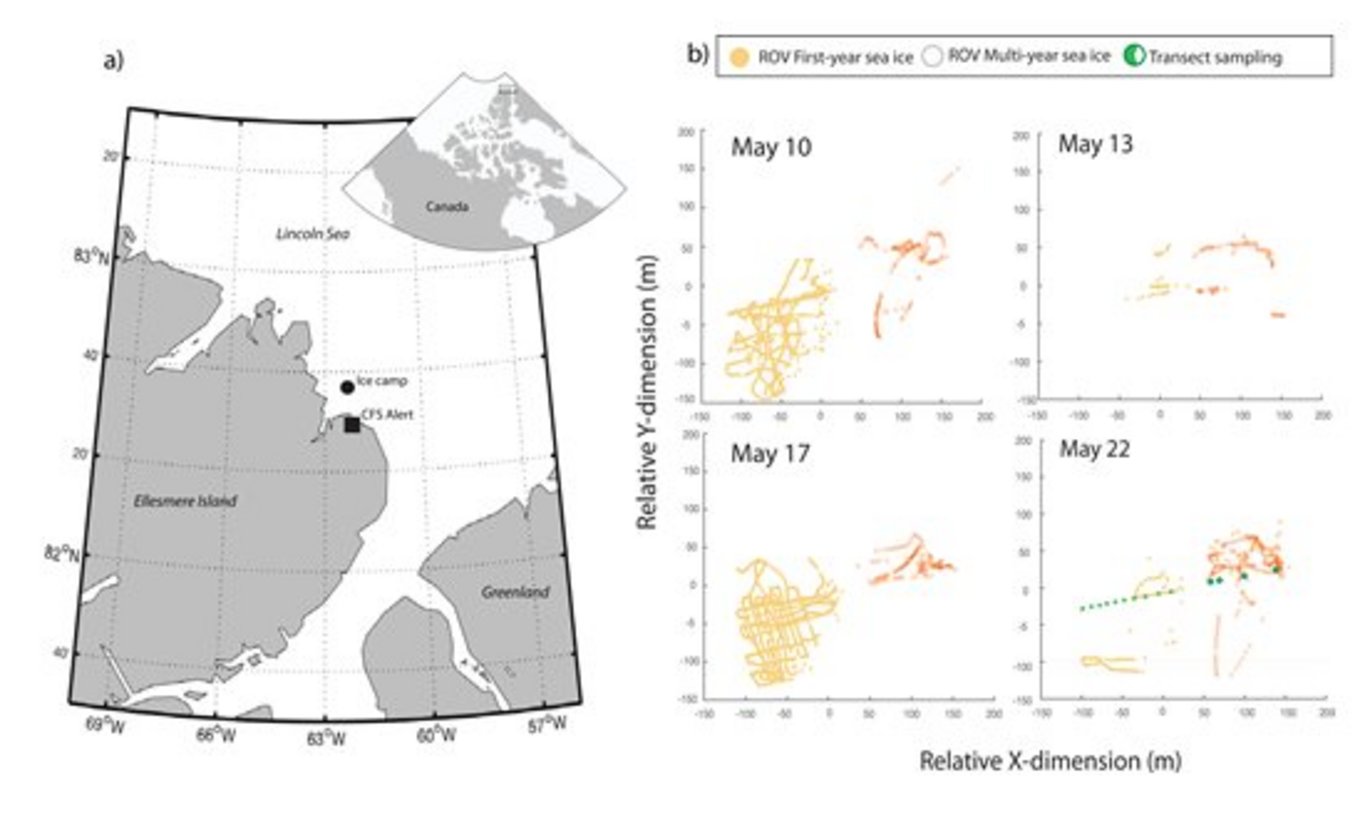Net heterotrophy in High Arctic first-year and multi-year spring sea ice
New publication by Karley Campbell, B. A. Lange, J. C. Landy, et al.

Abstract:
The net productivity of sea ice is determined by the physical and geochemical characteristics of the ice–ocean system and the activity of organisms inhabiting the ice. Differences in habitat suitability between first-year and multi-year sea ice can affect the ice algal community composition and acclimation state, introducing considerable variability to primary production within each ice type. In this study, we characterized the biogeochemical variability between adjacent first-year and multi-year sea ice floes in the Lincoln Sea of the Canadian High Arctic, during the May 2018 Multidisciplinary Arctic Program—Last Ice sampling campaign. Combining measurements of transmitted irradiance from a remotely operated underwater vehicle with laboratory-based oxygen optode incubations, this work shows widespread heterotrophy (net oxygen uptake) in the bottom 10 cm of both ice types, particularly in thick multi-year ice (>2.4 m) and early morning of the 24-h day. Algal acclimation state and species composition varied between ice types despite similar net community production due to widespread light and nutrient limitation. The first-year ice algal community was increasingly dominated over spring by the potentially toxin-producing genus Pseudonitzschia that was acclimated to high and variable light conditions characteristic of a thinner ice habitat with mobile snow cover. In comparison, the multi-year ice harbored more shade-acclimated algae of mixed composition. This work highlights the potential for heterotrophy in sea ice habitats of the High Arctic, including first measurements of such O2-uptake in multi-year ice floes. Observed differences in photophysiology between algae of these sea ice types suggests that a shift toward higher light availability and a younger sea ice cover with climate change does not necessarily result in a more productive system. Instead, it may favor future sea ice algal communities of different species composition, with lower photosynthetic potential but greater resilience to stronger and more variable light conditions.
